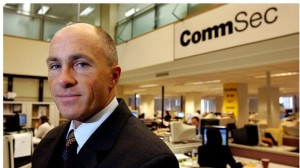
THE mining boom state of Western Australia continues to lead the nation’s economic growth and is set to maintain its course for most of this year. WA’s economic output is now 28 per cent higher than its 10-year average, the latest quarterly State of the States report compiled by CommSec shows. “Western Australia has consolidated its position as the nation’s strongest economy,” CommSec chief economist Craig James said in a statement.
The state is also leading its eastern state counterparts in terms of construction activity, business equipment spending, while its 4.3 per cent jobless rate is the lowest next to the ACT on 3.8 per cent. It’s also doing well on retail spending and population growth. “Western Australia is expected to hold its position in coming quarters,” Mr James said.
But Queensland is on its way to catching up, underpinned by a strengthening resources sector and building reconstruction, CommSec said. Queensland’s quarterly economic output was 19 per cent above its long term average and while that’s well down on WA it’s still well ahead of Australia’s most populous state of NSW, which recorded a comparatively measly eight per cent – the weakest of all the states and territories.
“The outlook for the NSW economy is more uncertain,” Mr James said. “Unemployment is steady and population growth is still slightly above long-term averages. “But growth in equipment investment has slowed, retail spending is falling in real terms compared with a year ago, while dwelling starts are also down on a year ago.”
However, Reserve Bank of Australia interest rate cuts in November and December should help housing activity across the nation, with Queensland and NSW most likely to benefit. And if the global economic conditions improve, there should be wider growth. “If the global economy picks up steam, this will benefit resources-dependent economies such as Western Australia, Queensland, South Australia and Northern Territory,” Mr James said.
The outlook for the global economy is fragile at present, after the World Bank this week cut by almost half its forecasts for 2012 and 2013 and warned there could be another world recession ahead. While the federal government continues to talk about the two-speed nature of the national economy, where resources states like WA are growing while others languish, Mr James believes the situation is more fractured.
He says Australia has a three-speed economy, with WA well out in front on its own, Victoria and the ACT in the second group and a third tier made up of Tasmania, Queensland, South Australia, NSW and the Northern Territory.
The State of the States report analysed eight key indicators gathered over the December quarter 2011 and compared the outcomes with long-term averages.
Article & Image source – AAP